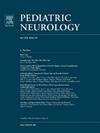Lennox-Gastaut 综合征与不同亚型强直性发作的比较分析:单中心回顾性队列研究
IF 3.2
3区 医学
Q2 CLINICAL NEUROLOGY
引用次数: 0
摘要
背景:伦诺克斯-加斯托特综合征(Lennox-Gastaut syndrome,LGS)是最严重的儿童癫痫性脑病之一,主要特征是强直性发作。在临床实践中,我们发现了 LGS 强直性发作的各种亚型。本研究旨在分析 LGS 不同亚型的临床特征、电图特征、治疗反应和预后:这项回顾性队列研究纳入了本中心在2017年1月至2020年1月期间确诊的46例LGS患者。根据强直性发作亚型将患者分为四组:A组(强直)、B组(痉挛-强直)、C组(肌阵挛-强直)和D组(痉挛-强直和肌阵挛-强直的组合)。收集并分析了全面的临床数据:结果:46 名患者中有 33 名男性。B 组的平均发病年龄(12.38 ± 7.85 个月)明显小于其他三组(P = 0.02)。各组病因无明显差异。基因分析确定了 SCN8A、MCCC2、STXBP1、GABRB3 和 CACNA1H 的突变。经过至少 24 个月的随访,A 组和 C 组的治疗效果更佳,而 B 组和 D 组的精神运动发育明显较差:本研究的结果表明,LGS 可能表现为不同亚型的强直性发作,其中痉挛-强直性发作出现的年龄较早。与其他亚型的LGS患者相比,出现痉挛-强直发作、伴有或不伴有肌阵挛-强直发作的患者在治疗反应和精神运动发育方面表现较差。本文章由计算机程序翻译,如有差异,请以英文原文为准。
Comparative Analysis of Lennox-Gastaut Syndrome With Different Subtypes of Tonic Seizures: A Single-Center Retrospective Cohort Study
Background
Lennox-Gastaut syndrome (LGS) is one of the most severe childhood-onset epileptic encephalopathies, primarily characterized by tonic seizures. In clinical practice, we have identified various subtypes of tonic seizures in LGS. This study aimed to analyze the clinical characteristics, electrographic features, treatment responses, and prognosis across different subtypes of LGS.
Methods
This retrospective cohort study included 46 patients diagnosed with LGS at our center between January 2017 and January 2020. Patients were classified into four groups based on tonic seizure subtypes: Group A (tonic), Group B (spasm-tonic), Group C (myoclonic-tonic), and Group D (combination of spasm-tonic and myoclonic-tonic). Comprehensive clinical data were collected and analyzed.
Results
Of the 46 patients, 33 were male. The mean age of onset for Group B (12.38 ± 7.85 months) was significantly less than those of the other three groups (P = 0.02). No significant differences in etiology were found among the groups. Genetic analysis identified mutations in SCN8A, MCCC2, STXBP1, GABRB3, and CACNA1H. After a minimum follow-up of 24 months, the treatment outcomes were more favorable in Groups A and C, whereas psychomotor development was notably poorer in Groups B and D.
Conclusions
The findings of this study suggest that LGS may present with distinct subtypes of tonic seizures, with spasm-tonic seizures presenting at an earlier age. Patients with LGS experiencing spasm-tonic seizures, with or without myoclonic-tonic seizures, exhibited poorer treatment responses and psychomotor development than those with other subtypes.
求助全文
通过发布文献求助,成功后即可免费获取论文全文。
去求助
来源期刊

Pediatric neurology
医学-临床神经学
CiteScore
4.80
自引率
2.60%
发文量
176
审稿时长
78 days
期刊介绍:
Pediatric Neurology publishes timely peer-reviewed clinical and research articles covering all aspects of the developing nervous system.
Pediatric Neurology features up-to-the-minute publication of the latest advances in the diagnosis, management, and treatment of pediatric neurologic disorders. The journal''s editor, E. Steve Roach, in conjunction with the team of Associate Editors, heads an internationally recognized editorial board, ensuring the most authoritative and extensive coverage of the field. Among the topics covered are: epilepsy, mitochondrial diseases, congenital malformations, chromosomopathies, peripheral neuropathies, perinatal and childhood stroke, cerebral palsy, as well as other diseases affecting the developing nervous system.
 求助内容:
求助内容: 应助结果提醒方式:
应助结果提醒方式:


